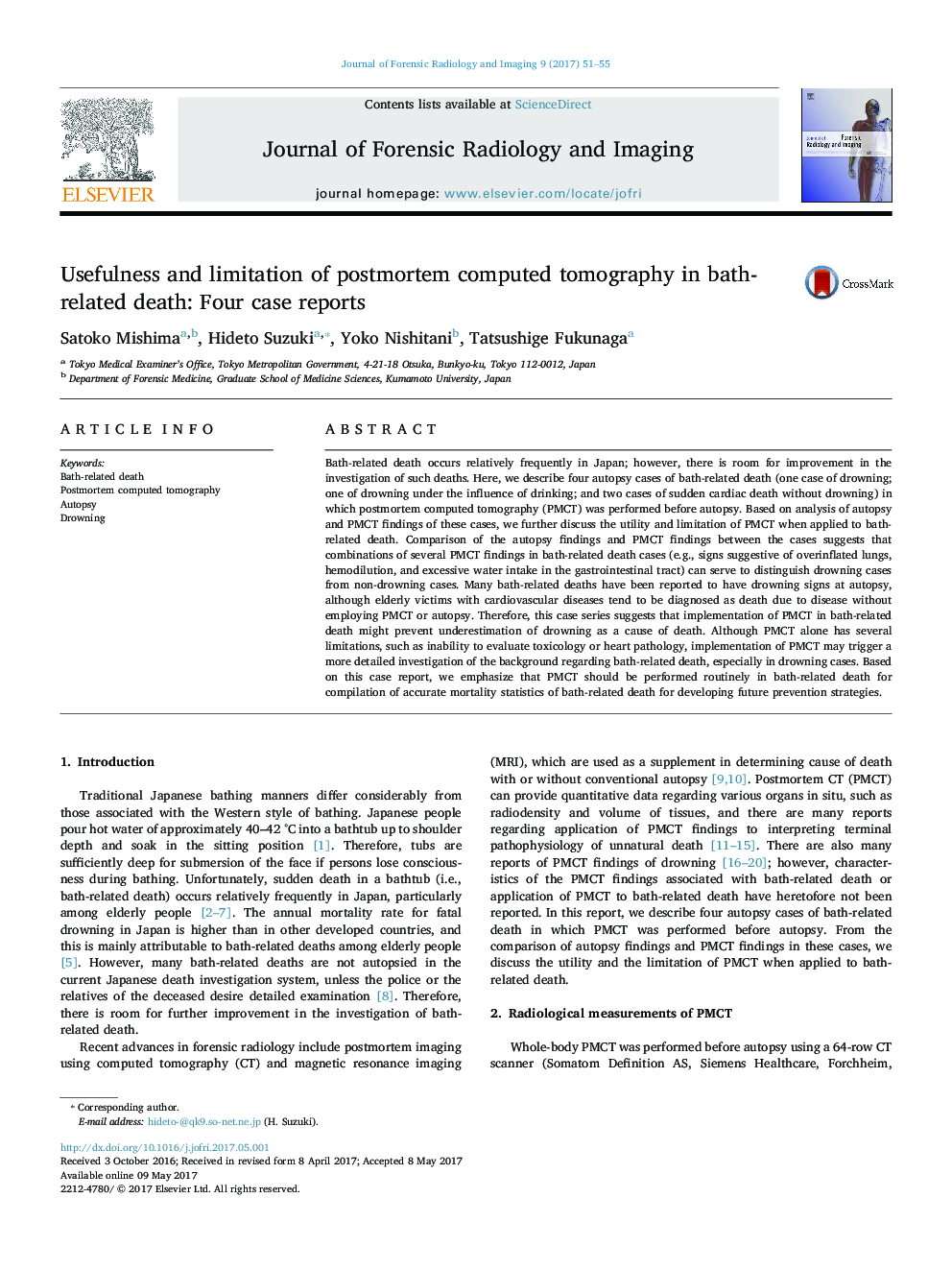| Article ID | Journal | Published Year | Pages | File Type |
|---|---|---|---|---|
| 6463087 | Journal of Forensic Radiology and Imaging | 2017 | 5 Pages |
â¢Four autopsy cases of bath-related death in which PMCT was performed before autopsy are presented.â¢The utility and limitation of PMCT in bath-related death are discussed.â¢PMCT findings in bath-related death serve to distinguish drowning cases from non-drowning cases.â¢PMCT in bath-related death may prevent underestimating drowning as a cause of death.â¢Implementation of PMCT may serve to investigate background of bath-related death more in detail.
Bath-related death occurs relatively frequently in Japan; however, there is room for improvement in the investigation of such deaths. Here, we describe four autopsy cases of bath-related death (one case of drowning; one of drowning under the influence of drinking; and two cases of sudden cardiac death without drowning) in which postmortem computed tomography (PMCT) was performed before autopsy. Based on analysis of autopsy and PMCT findings of these cases, we further discuss the utility and limitation of PMCT when applied to bath-related death. Comparison of the autopsy findings and PMCT findings between the cases suggests that combinations of several PMCT findings in bath-related death cases (e.g., signs suggestive of overinflated lungs, hemodilution, and excessive water intake in the gastrointestinal tract) can serve to distinguish drowning cases from non-drowning cases. Many bath-related deaths have been reported to have drowning signs at autopsy, although elderly victims with cardiovascular diseases tend to be diagnosed as death due to disease without employing PMCT or autopsy. Therefore, this case series suggests that implementation of PMCT in bath-related death might prevent underestimation of drowning as a cause of death. Although PMCT alone has several limitations, such as inability to evaluate toxicology or heart pathology, implementation of PMCT may trigger a more detailed investigation of the background regarding bath-related death, especially in drowning cases. Based on this case report, we emphasize that PMCT should be performed routinely in bath-related death for compilation of accurate mortality statistics of bath-related death for developing future prevention strategies.
